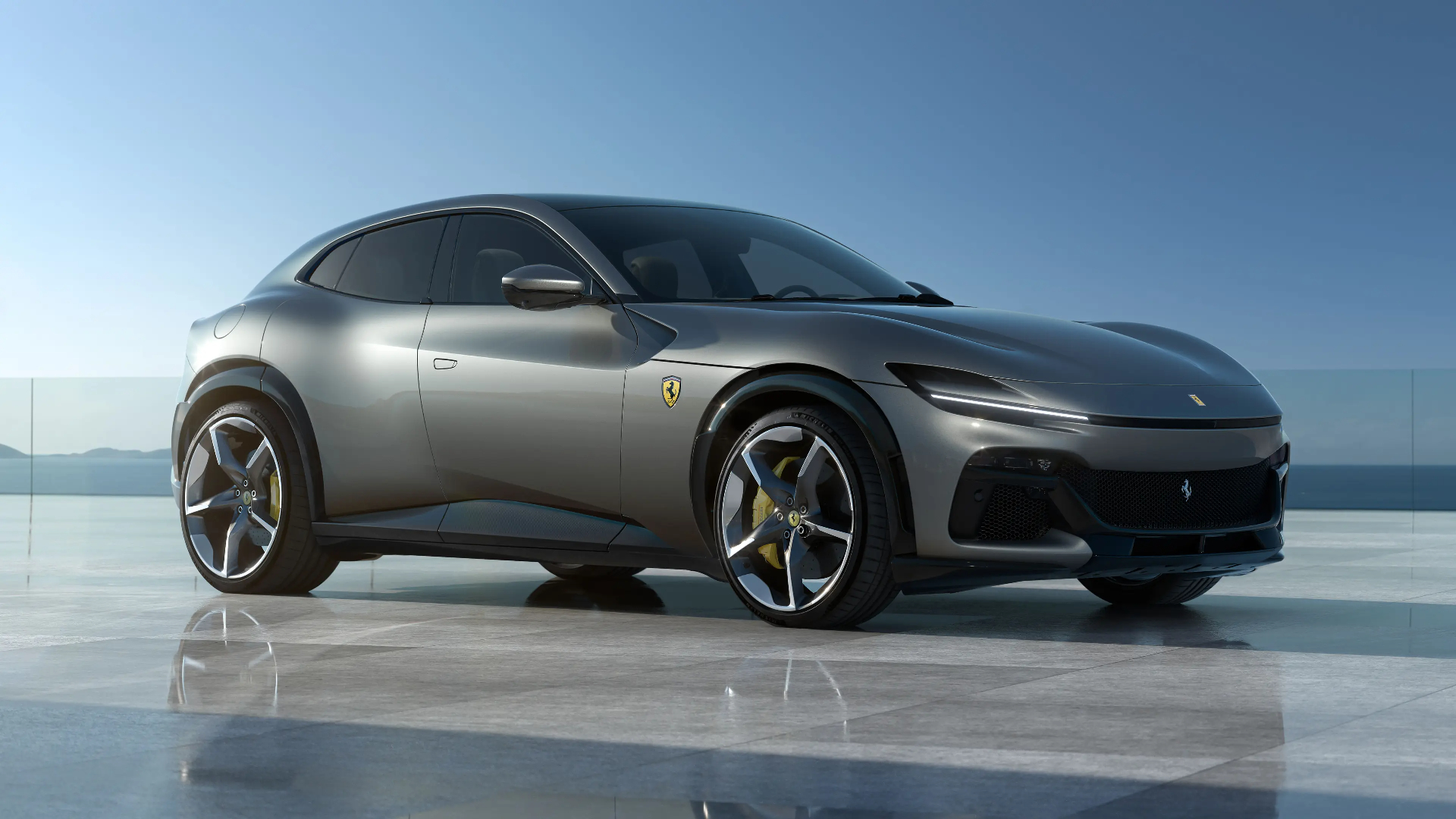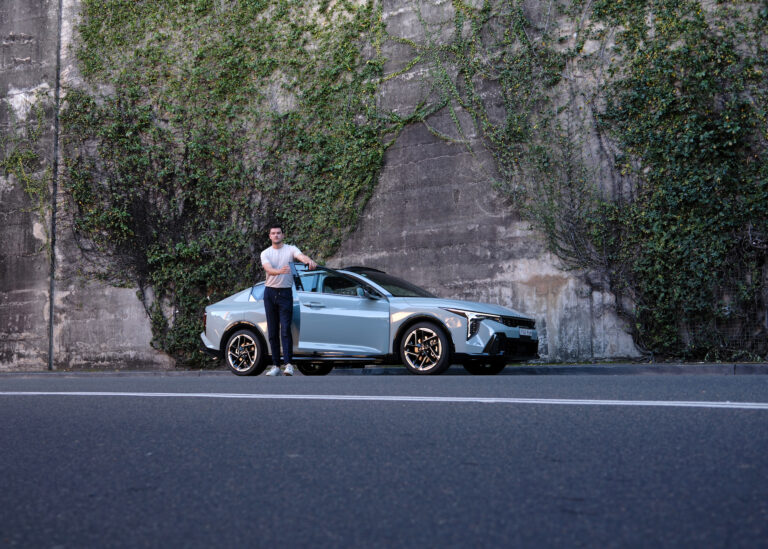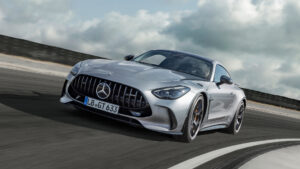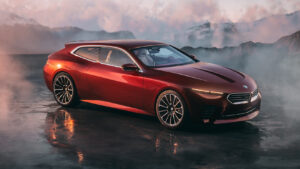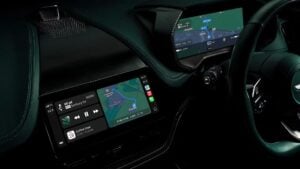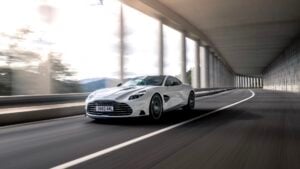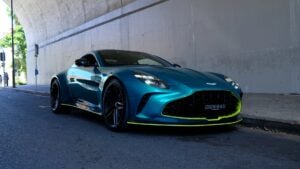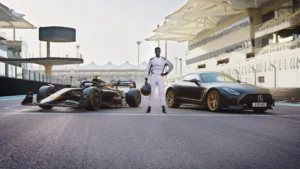After four years of patiently waiting, we finally have Maranello’s first SUV: The Ferrari Purosangue.
Named after the famous Italian horse breed, the ultra-performance SUV – or Ferrari Utility Vehicle, if you prefer Maranello marketing hyperbole – began development way back in 2018 under the “F175” codename.
Initially, Ferrari said they would never release an SUV, and in a way, it looks like they haven’t. It’s the first four-door/four-seater Ferrari has produced, and while many were predicting a large, off-road hypercar, the Purosangue looks more closer to a wagon with its 1,589mm height. The new car effectively replaces GTC4 Lusso, but rather than building up from its older sibling, Ferrari has built an all-new chassis allowing for increased stiffness and interior space.
RELATED: WATCH – Ferrari’s First SUV Has Been Spotted In The Wild
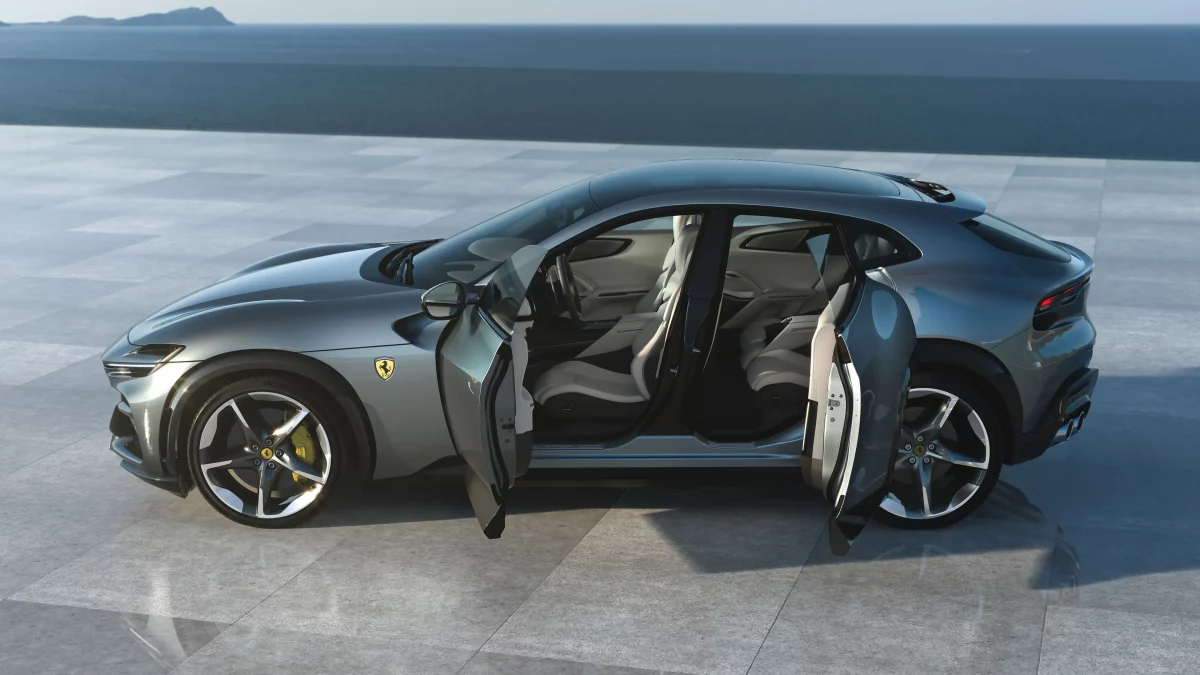

The FUV features a carbon fibre roof as standard, which sets the tone for an overruling “low centre of gravity” theme, but there’s an optional glass panoramic roof if you’re ok with a few extra kegs. By far, the most remarkable design feature of the Purosangue is the electric suicide doors, which effectively provide the illusion of a coupe with the practicality of being able to get two humans in the back without ducking around folding seats.
Rounding off the new Italian sled are two pairs of Maranello’s largest rims with 22 inches up front and colossal 23s at the rear. While the huge wheels certainly look the part, the ultra-low profile tyres required all but rule out the Purosangue’s off-road credentials.
Inside the cabin, you get four electrically adjustable bucket seats, separate front and rear climate control, wireless charging and plenty of storage. Similar to the optional passenger screens introduced on the predecessor, the Purosangue gets a 10.2-inch touchscreen to play with, which should come in handy, as Ferrari has finally offered Apple CarPlay and Android Auto; wait for it… as standard.

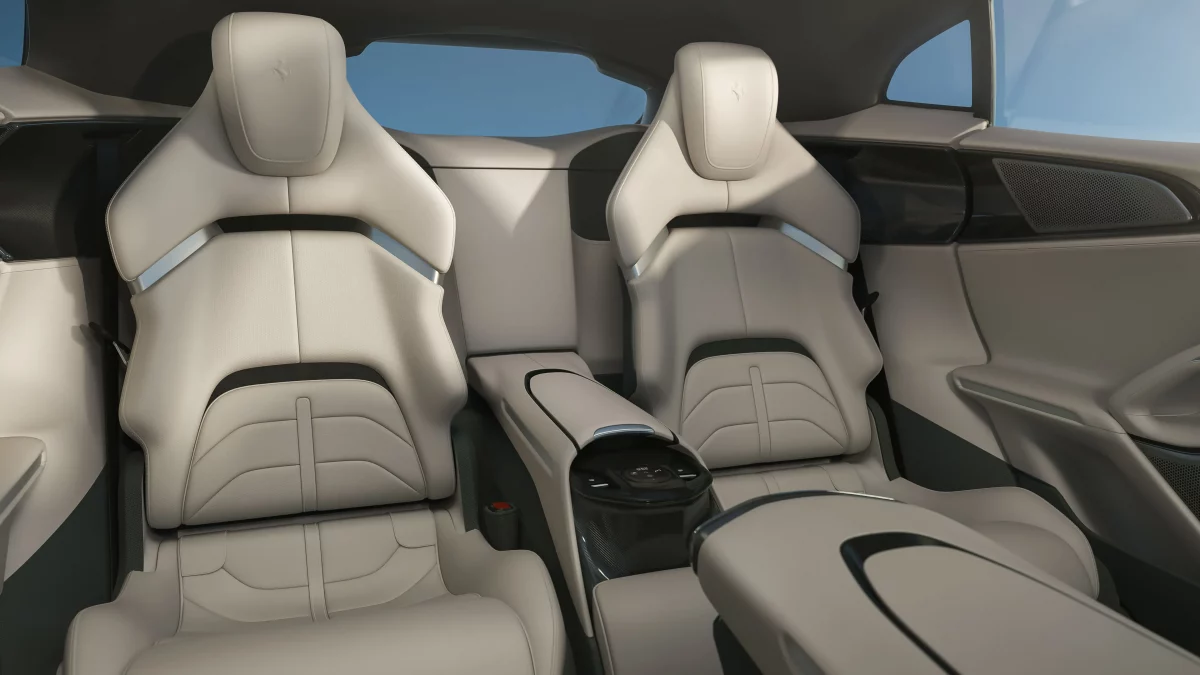
RELATED: Justin Bieber Is Banned From Buying Ferrari (And It’s Too Late To Say Sorry)
But let’s face it, anyone handing over cash for the super-wagon is doing it for the performance (maybe a little for the badge, respectfully). And the Purosangue doesn’t disappoint. Rather than using turbo-chargers or an electrically-assisted powertrain, Ferrari has stuck to their guns and dropped in that mouth-watering, 6.5-litre naturally aspirated V12. The goliath produces 80% of the maximum torque at just 2,100 rpm, peaking at 716 Nm at 6,250 rpm, and a maximum power output of 725 PS. The eight-speed dual-clutch gearbox helps propel the Purosangue from 0-100 in 3.3 seconds with a top speed of 310 km/h.
Given all this power, weight, and ridiculously large wheels on ridiculously low-profile rubber, Ferrari has had to develop some electronic suspension wizardry. It’s taken technology from the racecar team “Multimatic” and developed an all-new suspension architecture. The system combines an electric motor with a spool valve hydraulic damper on each corner to stabilise the chassis far quicker than other systems on the market.
Prices are set to be north of $700,000 when right-hand drive units are delivered in late 2023, with Ferrari capping Purosangue sales at 20% of total output. Although given the likes of the Lamborghini Urus, Aston Martin DBX, and Bentley Bentayga offering competitive performance at nearly half the price, they might not have to.
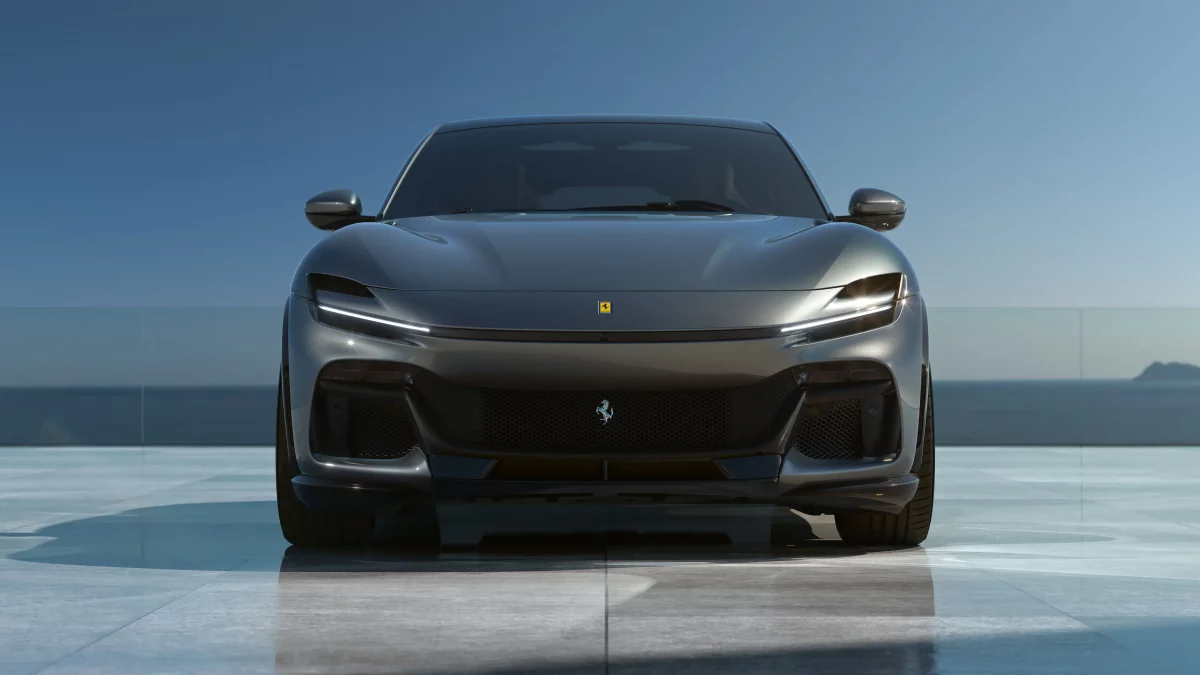
Ferrari Purosangue Technical Specifications
Powertrain
- Type: V12 – 65° – dry sump
- Overall displacement: 6496 cc
- Bore & stroke: 94 mm x 78 mm
- Max. power output*: 725 cv at 7750 rpm
- Max. torque: 716 Nm at 6250 rpm
- Max. revs: 8,250 rpm
- Compression ratio: 13.6:1
- Specific power output: 111 cv/l
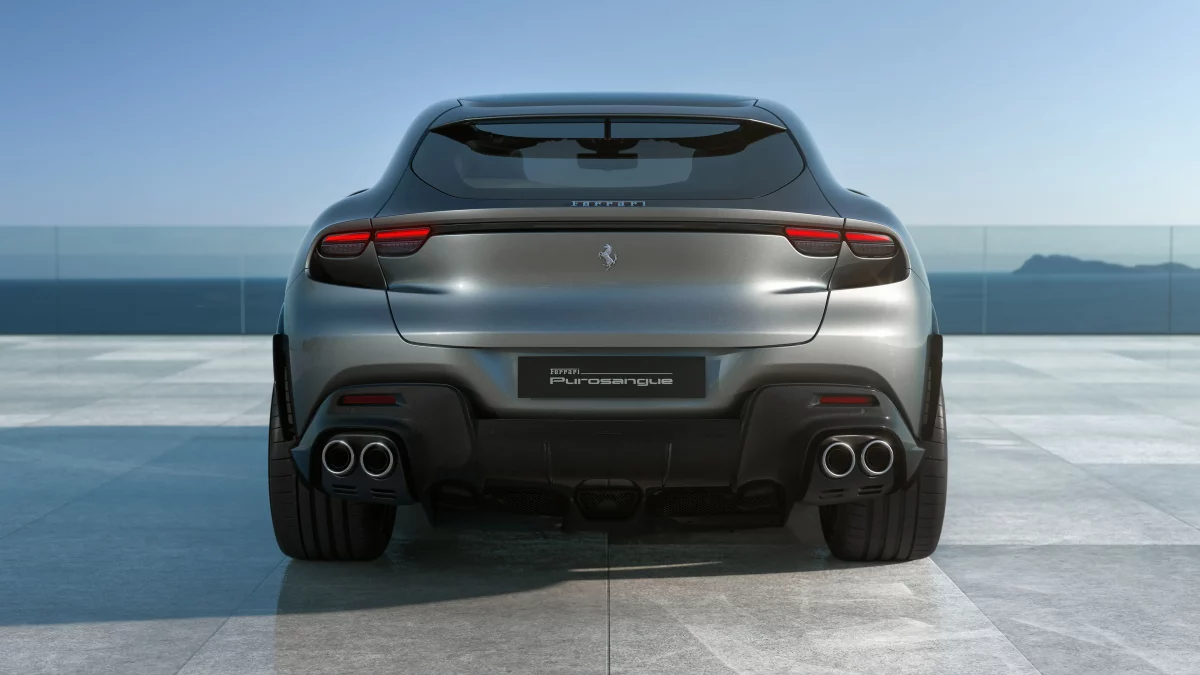
Dimensions & Width
- Length: 4973 mm
- Width: 2028 mm
- Height: 1589 mm
- Wheelbase: 3018 mm
- Front track: 1737 mm
- Rear track: 1720 mm
- Dry weight**: 2033 kg
- Dry/power ratio: 2.80 kg/cv
- Weight distribution: 49% front / 51% rear
- Fuel tank capacity: 100 litres
- Boot capacity: 473 litres
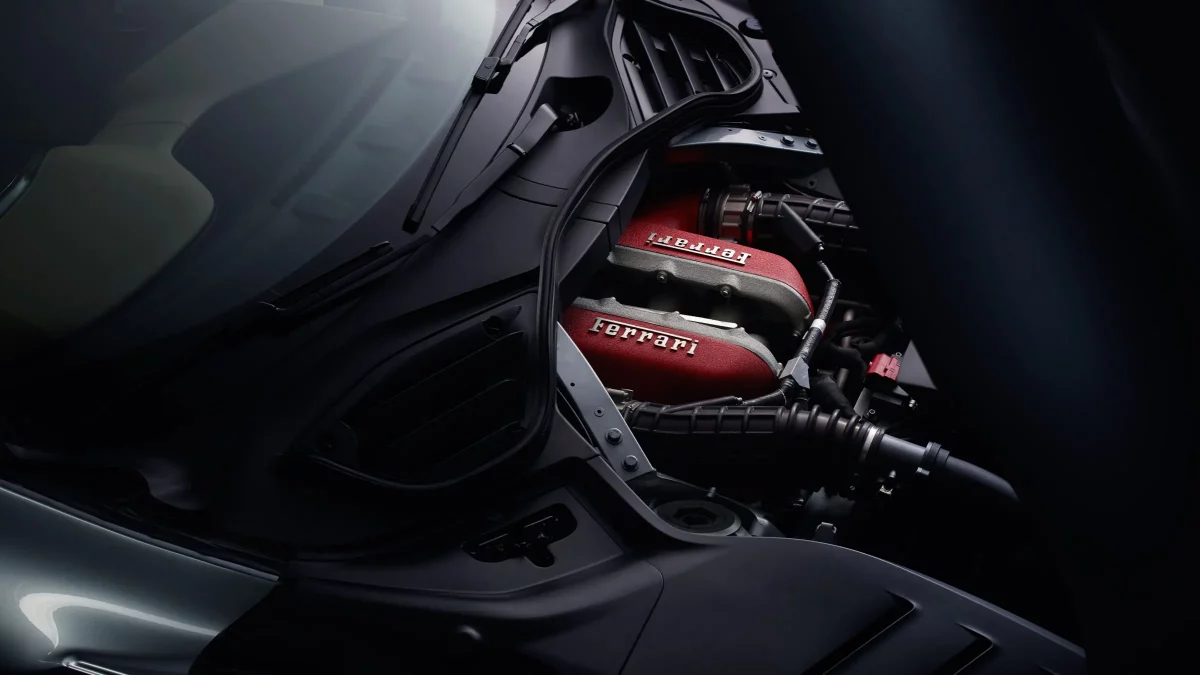
Performance
- Max. speed: > 310 km/h
- 0-100 km/h: 3.3 s
- 0-200 km/h: 10.6 s
- 100-0 km/h: 32.8 m
- 200-0 km/h: 129 m
